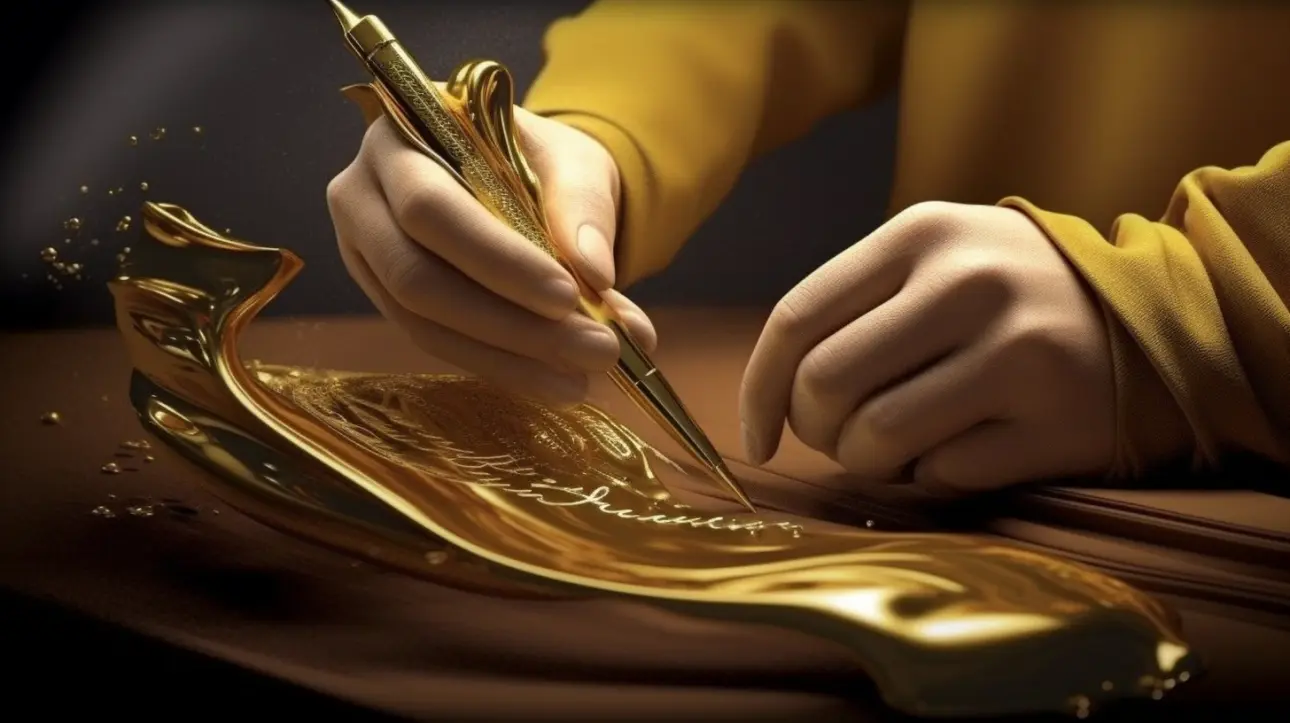Considering setting up a family trust in Australia?
Ever felt overwhelmed by complex legal and financial terms?
You’re at the right place. This is your ticket to an easy-to-follow guide.
Want to Jump Right In?
Your Backstage Pass to Setting up a Family Trust in Australia
Imagine a blockbuster movie that steps you through the process, breaking down the complexities for you. Think of Family Trusts as a high-stakes financial drama, with you in the director’s seat.

They have the allure of a lead actor, offering benefits like asset protection, tax planning advantages, and effective succession planning. Setting up a family trust in Australia is a role that many high-income earners choose to play.
In Australia, they are also known as discretionary trusts. They are used for managing a family’s wealth or holding a company that runs a business.
If you’re a high-income earner, keen on pulling the strings of your finances more effectively, this is your showtime. Grab your popcorn and let’s dive into the gripping narrative of Family Trusts!
Step 1: Setting Your Objectives – The Plot Development in Your Family Trust Saga

Scene One: Understanding the Plot
The first step, just like in any film, involves defining your objectives, the plot of your trust adventure. This plot guides your course through the complicated storyline of trust structures, legal intricacies, and tax planning.
Scene Two: The Leading Star and the Strategic Plot Twist
Understanding why you want to kick off production on a Family Trust is essential to align this fiscal tool with your unique goals.
You might be the leading star in your career, earning high income and considering diversifying your portfolio. Along with your professional success comes the hurdle of high tax rates.
In this scene, establishing a Family Trust could be a strategic plot twist to optimise taxation on your investment income.
Scene Three: The Bucket Company Subplot
An intriguing subplot to your movie could be directing the trust’s income to a corporate beneficiary. This is often called the “bucket company” strategy.
This strategy could help cap your income at a corporate tax rate. This rate could be lower than your personal one, which is a positive twist in your story.
Another option is to distribute investment income among beneficiaries in lower tax brackets. It’s like creating a feel-good ending for all the characters in your movie.

Scene Four: Asset Protection and Succession Planning
But this isn’t just a tax optimisation saga; it’s also about asset protection and succession planning.
By setting up a Family Trust, you ensure a smooth transition of assets to the next generation, while guarding your hard-earned wealth against any business risks.

Scene Five: The Finish Line – Setting Your Objectives
Once you have your objectives clear and your plan ready, you’re set to tackle the complexities of setting up a family trust in Australia.
Understanding your “why” is the first step in creating your Family Trust. Now, grab your director’s chair, and let’s move to mastering the fundamentals!
Step 2: Lights, Camera, Basics – Mastering the Fundamentals before Setting Up a Family Trust in Australia

Genre Selection: Types of Trusts
When setting up a Family Trust in Australia, imagine you’re not just directing any movie – it’s a specific genre. Family Trusts fall under the broader category of Trusts, much like movie genres in filmmaking.
Just as there are dramas, comedies, and thrillers, there are different types of trusts such as Unit Trusts, Hybrid Trusts, and Testamentary Trusts, each with its own unique characteristics and plotlines.
Family Trusts, also known as Discretionary Trusts, have a unique plot twist – they give the Trustee the discretion to decide how to distribute the trust’s income and capital among the Beneficiaries.
It’s like having a lead actor with excellent improvisation skills, capable of changing the plot direction to best suit the storyline.
Script Writing: The Trust Deed

But every movie needs a script, and in the world of Family Trusts, the script is your Trust Deed. This critical document outlines all the roles (see our roles overview below), and the type of Trust Property.
The Trust Deed defines the operation and management of the trust. This script should be carefully crafted by a professional to ensure it meets all legal requirements and is tailored to your unique needs and objectives.
The Producer’s Role: The Trustee
In the world of trusts, the Trustee is like the movie producer. This role is crucial. If you’re financially knowledgeable, you can consider taking on this part yourself.
The Trustee holds the trust’s assets for the beneficiaries. Their role involves key decision-making. They handle trust operations, asset investment, and income distribution.

Being a Trustee is a significant responsibility. They must always act in the best interests of the beneficiaries.
They must also follow the rules set out in the Trust Deed. Their choices can influence the trust’s success and the beneficiaries’ financial wellbeing.
If you decide to be your own Trustee, understanding the role is vital. You need knowledge about duties, potential risks, and legal requirements. This understanding helps you manage the trust effectively.
But remember, setting up a Family Trust in Australia isn’t like directing a one-off film. It’s more akin to running a television series, requiring constant attention and management.
If you would like to dive deeper into Family Trust Fundamentals check out What is a Family Trust.
Step 3: Casting the Characters – Role Assignments when Setting Up a Family Trust in Australia
Casting for Your Family Trust Film
After grasping the fundamentals, the real fun of setting up a family trust in Australia begins. You’re not just playing, you’re casting and directing, too!
Just like any good film, each character in your trust story plays a crucial role, and your casting choices will shape the narrative of your Family Trust.

Meet the Characters: Settlor, Trustees, Appointor and Beneficiaries
The Settlor, akin to the scriptwriter, initiates the trust’s storyline and sets the stage, creating the trust and establishing the initial trust fund. However, once written, they aren’t involved ever again.
In the narrative of your trust, the Appointor plays a role akin to an Executive Producer in a movie. They might not be involved in the daily operations, but they have a crucial power: the ability to appoint or remove Trustees (the producer).
Finally that leaves our Beneficiaries. These are the audience for whom the entire plot unfolds. These individuals or entities will ultimately reap the benefits from the trust. They’re the reason why the ‘show’ – your Family Trust – is put on in the first place.
Casting Decisions
Casting the right characters in these roles is akin to selecting the perfect actors for a blockbuster movie. This choice depends on your unique script – your specific situation and objectives.
Are you contemplating a corporate trustee, for additional flexibility? Who should be the beneficiaries based on your succession planning?
If you want to learn more about selecting the best cast for your Family Trust movie, sign up at the bottom of this post to be notified of new articles.
And now, the stage is set, and the characters are in place. But are you ready to shout, “Action!” and bring your trust story to life? We’ll explore that in our next step!
Step 4: Assemble Your Production Team – Expert Advice when Setting Up a Family Trust in Australia
Consulting the Experts
Just as film directors bring in experts for the best movie results, you should consider professional advice when setting up a family trust in Australia.

The plot of your trust story changes depending on your trust’s focus. Are you running a business, or managing passive share investments?
Each presents unique risks and considerations, turning your trust journey into a diverse genre film festival.
Navigating the Business Thriller
If your trust is involved in running a business, your script may contain more high-risk scenes. Business debts or lawsuits could pose threats to the trust’s assets.
This scenario feels like a high-speed car chase, thrilling yet requiring expert guidance. Here, a lawyer’s advice on trust and company structuring is invaluable.
Understanding the Art-house Investment Drama
Alternatively, your trust might be quietly managing passive share investments. Seemingly more akin to a serene art-house film than an action-packed thriller.
Yet, beneath the surface, there might be complex financial dynamics at play.
Navigating the complex world of investments requires a unique skill set. These are financial skills, distinct from others. They underscore the importance of your personal expertise in investment strategy and portfolio management.
The Co-Directors: Your Professional Advisers
Whether navigating high-stakes business ventures or plotting passive investment dramas, different professional advisers can act as your co-directors. Their expertise varies as widely as your trust’s potential scenarios.
Legal Counsel: Your Stunt Coordinator
A seasoned lawyer can guide you through the thrilling chase scenes of business risks. They offer advice on trust and company structuring to mitigate legal hazards. This ensures a safer course for your high-speed trust venture.


Financial Adviser: Your Cinematographer
When your trust’s script involves passive investments, a fee-for-service licensed adviser can help you maintain your trust’s financial stability and fill in any knowledge gaps.
Much like a skilled cinematographer, a financial adviser enhances your trust narrative by providing key financial
The Film Editor: Your Trust’s Accountant

An accountant, much like a meticulous film editor, is another key player in crafting your trust narrative. They’re experts in dissecting complex financial sequences, ensuring the storyline stays consistent and financially accurate.
They can help you understand the tax implications of your trust and guide you in managing its financial records.
Whether it’s maintaining balance sheets or calculating tax liabilities, an accountant’s expertise can be invaluable.
Just as an editor ensures a film’s continuity and coherence, an accountant helps maintain the financial integrity of your trust story.
The One-Man Film Crew: Leveraging Personal Knowledge
A number of our readers fall into the do it yourself camp. That is learning everything they can about a particular subject, before getting their plan checked over by those more knowledgeable.
These people want to understand every single aspect and manage as much as they can themselves This is a big advantage when setting up a Family Trust in Australia.
This is exactly what I like to do. I’ve done a huge amount of research, engaged experts, and then went and did it myself.
Sign up to be notified when my new updates come out, where I share what I learned.
Bringing it back to the film analogy, this is akin to a film director who handles multiple roles – directing, acting, writing, and producing.

Pairing this knowledge with the right tools can further enhance your capabilities. Leveraging pre-vetted trust deeds can serve as your starter scripts.
Combining robust financial software provides even more useful guidance and oversight.
But remember, even a director known for wearing many hats may seek expert opinion. The management of a Family Trust can indeed be complex.
Professional advisers, then, act as your trusted film crew, helping you navigate specifics and mitigate potential risks.
A Unique Storyline: Tailored Advice
Each of these professional advisers contributes uniquely to your trust’s storyline. They provide advice tailored to your situation and objectives, paving the way for a successful conclusion to your trust narrative.
Setting up a Family Trust may feel like directing a suspense-filled movie. But don’t worry, expert advice is not far away.
Sign up to our newsletter to keep informed when I release our adviser and service provider reviews. These are based on actual services that I have used.
Armed with this knowledge, you’ll be better prepared to direct your Family Trust narrative. Now, you can aim for that successful, blockbuster finish to your story!
Step 5: Building Your Production Team when Setting Up a Family Trust in Australia
This step involves selecting a service provider and drafting the Trust Deed. This could be engaging a lawyer, an accountant, or using an online trust deed service.
This is an integral part of setting up a family trust in Australia. In this process, think of yourself as building a production team.

Role of the Service Provider
Your service provider will be the scriptwriter. Remember, successful movies often result from collaborative efforts.
Make sure your service provider understands your vision. They should be able to translate your vision into a trust deed that meets your objectives.
Choosing the Right Service Provider
You might be wondering how to find the right scriptwriter for your trust story. You will need to sign up to be notified when I release my thoughts on various trust deed providers.
In the mean time starting researching different service provider options.
Once you have selected your service provider. Then your trust deed gets drafted.
This process is like the final “cut” on a movie set. With these steps completed, your Family Trust story is nearly ready for the big screen!
Step 6: Execution of the Trust Deed – The Red Carpet Premiere
The Trust Deed, your trust movie’s script, is now ready. It’s time for the big moment – the equivalent of a red carpet premiere. In trust terms, we call this the execution of the Trust Deed.

Shining the Spotlight on the Settlor and the Trustee
This critical moment is similar to the spotlight shining on your main actors – the Settlor and the Trustee.
Before they can take the stage, though, the Trustee must agree to act. They do this by signing a formal document.
This document confirms their readiness to play their role. It’s like the lead actor agreeing to their role before a movie begins production.
Making Marks and Exchanging Gifts
After the Trustee gives consent to act, they and the Settlor sign the Trust Deed. This is akin to your movie’s stars leaving their mark on Hollywood’s Walk of Fame.
Then, the Settlor makes a nominal gift to the trust, often just $10. This small amount has huge symbolic importance. It’s like the golden ticket that opens your Family Trust theatre.
This small gift can unlock vast potential. It sets the stage for protecting and growing your family’s wealth.

Confirming the Execution and Navigating the Stamping Process
Now depending on the state, the final step is an official stamp on the trust deed. It’s like the first snap of the movie clapperboard, or the champagne cork pop at the premiere. It’s a sign that your Family Trust story is officially live and ready for action!
In New South Wales, Victoria, and the Northern Territory, trusts must be stamped by the state revenue office or a registered agent. Stamping is a requirement for the establishment of trusts in these jurisdictions.
However, in the Australian Capital Territory, South Australia, Queensland, and Western Australia, the stamping of trust deeds is not mandatory, and trusts are not subject to stamp duty.
Navigating the process of stamping a Trust Deed can be challenging if you are doing it yourself.
The actual stamping process itself is straightforward, but different states have different rules which can make things more complex. It’s almost as intricate as the plot of a multi-season TV series.
If you want to find out more about stamping your Trust Deed and how to navigate the state-specific requirements, sign up to be notified when our upcoming article on this topic is released.
Step 7: Trustee Meeting – Solidifying Commitment
The Trustee Meeting is a crucial step for Family Trusts with a Corporate Trustee. Directors formally accept their appointment and agree to the terms outlined in the Trust Deed, solidifying their commitment to the trust’s objectives.
This meeting establishes clear communication and a unified approach among the directors in fulfilling their responsibilities. With the Trustee Meeting complete, your Family Trust is ready to embark on its journey towards financial success.
Step 8: Register the Trust with the ATO – The Film’s Release Certificate
A movie can’t be released without necessary certificates and clearances. Similarly, a Family Trust can’t operate without registration with the Australian Taxation Office (ATO). This registration is like the official ‘release certificate’ for your trust. It allows it to function legally and meet its tax obligations.
TFN and ABN Registration: The Trust’s Debut
After the Trust Deed has its premiere, the Trustee takes on a new role. They become akin to the film distributor. Their duty is to apply for a Tax File Number (TFN) and, if needed, an Australian Business Number (ABN) for the trust.
These numbers serve as unique identifiers for your trust. It’s similar to how a movie has a unique barcode in a film database. It ensures your Family Trust is ready for public operation, meaning it can operate within Australia’s legal and tax framework.
Step 9: Open a Bank Account for the Trust – The Box Office Opening
Just like a blockbuster movie isn’t complete without its grand box office opening, your Family Trust’s setup isn’t fully complete until it has a bank account.
So, after your trust has its TFN and, if necessary, its ABN, it’s time for the Trustee to open a bank account in the trust’s name.
Whether it’s receiving income (the box office earnings of our movie analogy) or distributing funds to the Beneficiaries (the dividends shared with movie investors), the trust’s bank account handles it all.

It’s essential to choose a bank that aligns with your trust’s requirements, offering the right blend of accessibility, security, and functionality.
You will need to visit a bank branch, and bring along your trust deed, and appropriate identification.
And with that, your Family Trust’s setup is complete!
Step 10: Review and Maintain Your Trust – The Sequels and Spin-offs
Just as successful movie franchises feature sequels, spin-offs, and even reboots, your Family Trust isn’t a one-and-done deal. Instead, it requires ongoing maintenance and periodic reviews to ensure it remains aligned with your financial goals and circumstances.
Keeping Your Family Trust Blockbuster-ready
This stage ensures your Family Trust remains the financial blockbuster you planned. You need to update the Trust Deed as laws or personal situations change.
Reviewing your choices of Settlor, Trustee, and Beneficiaries is also crucial. Keep in mind, maintaining your trust is an ongoing process.
Consider this as your ‘directorial cut’ that ensures your Family Trust stays relevant and continues to serve its purpose efficiently.
It’s a good idea to seek professional advice during these review stages. Sign up to be alerted for our upcoming blog post about Trust Maintenance and Review.
A director’s work continues even after a movie’s release. Similarly, your role in your Family Trust extends beyond its establishment.
Regular monitoring and adaptation to change can ensure your trust continues to deliver a stellar performance.
The Final Credits
You have reached the end of our Family Trust setup guide. From understanding the basics through to launching your Family Trust, you’ve navigated each plot twist skilfully.
In this process, you’ve thought about clear objectives, and who should fill what roles. You’ve learnt about risk implications and the importance of seeking expert advice. You also know the steps to draft the Trust Deed, executing it, registering with the ATO, and opening the trust’s bank account.
Though this was an adventure, the real journey begins now. The ultimate goal is the financial stability, tax efficiency, and wealth protection your trust will provide in the future.
Remember, even the best directors seek expert advice. Whether you need help with trust rules or want to maximise your trust’s benefits, our blog series is here to assist. Please sign up to stay across all future content.
It’s a wrap! Now, it’s time for your Family Trust to take centre stage. Let’s applaud your exceptional financial planning and look forward to your blockbuster financial future!
References
Check out the following references for more information.






